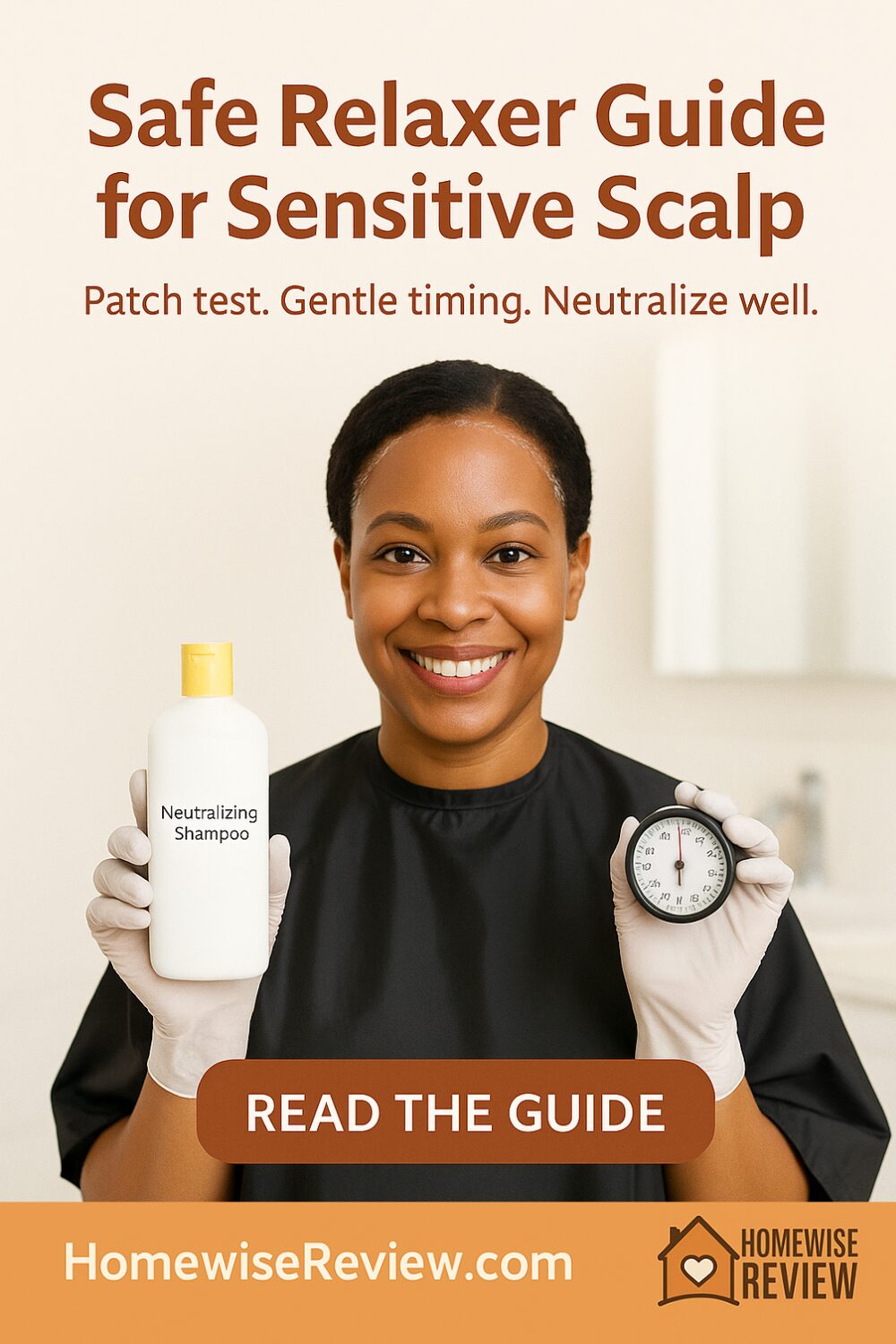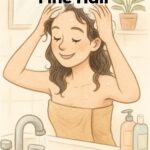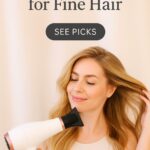
If you have a sensitive scalp and still want sleek, low-maintenance hair, a relaxer can be part of your routine, but only with a careful plan. Sensitive scalps are more prone to burning, flaking, and lingering tenderness, and those reactions usually come from a mix of pre-relaxer irritation, product sitting on the scalp, rushed rinsing, or overprocessing. On top of that, some hair straightening treatments release formaldehyde when heated, which is a separate health risk, especially in poorly ventilated spaces. This guide focuses on safer choices and a gentle technique so you can protect your scalp first and still get the finish you like.
This article is informational and not medical advice. If you have an active scalp condition or a history of reactions, talk with a dermatologist before any chemical service.
Who this guide is for
- You experience stinging, redness, or flaking during or after chemical services
- You have fine, coily hair that is easy to overprocess
- You want clear, step-by-step relaxer technique with a sensitive-scalp lens
Quick safety checklist
Before your relaxer
- Do a patch test and strand test at least 48 hours ahead.
- Avoid scratching, tight styles, or washing your scalp for 3–4 days before your relaxer.
- Protect skin with a petroleum-based barrier on hairline, ears, and nape.
- Consider a sensitive-scalp or no-lye formula, and keep a neutralizing shampoo on hand. The best neutralizers have a color indicator so you know when all residue is gone. Canadian Dermatology Association+1
During your relaxer
- Work on new growth only, keep product off the scalp as much as possible.
- Apply quickly in small sections, then smooth just enough to align the curl.
- Time by the manufacturer’s guide for your hair type, do not push the clock.
- If you feel burning, rinse immediately.
After your relaxer
- Rinse thoroughly with lukewarm water before neutralizing, then shampoo with a neutralizing shampoo until the color indicator stays consistent.
- Follow with a protein step to reinforce, then moisture to soften.
- Skip tight styles and harsh heat for at least a week.
- Do not color on the same day, and give at least two weeks between relaxing and permanent color. Canadian Dermatology Association
Choose the right formula for sensitive scalps
- Lye vs. no-lye: Lye relaxers often straighten efficiently but can sting more on sensitive scalps. No-lye options are usually gentler on the scalp, though they can leave hair drier because of calcium deposits, so plan a chelating wash every few weeks.
- Sensitive-scalp labeled systems: Stick with a single system from the same brand, including neutralizer and post-care, to keep pH steps predictable. Avoid mixing brands. thehaircarecompany.org
Timing, strength, and new-growth only
Relaxing previously relaxed hair is the fastest route to breakage and scalp irritation. Apply to new growth only, choose the mildest strength that will achieve your result, and plan retouches every 8–12 weeks so you have enough new growth to target. If your scalp is inflamed, postpone. People with scalp conditions like psoriasis should avoid relaxing during a flare and get guidance from a dermatologist first. AAD
Step-by-step sensitive-scalp application plan
- Prep the night before
Light oil on the hair shaft only if you like, but keep the scalp clean and undisturbed. No scratching or tight ponytails. - Protect the skin
Apply a petroleum-based barrier to hairline, ears, and nape. Clip up previously relaxed hair and lightly coat those lengths with petroleum to block overlap. - Section and speed
Create 4–6 sections. Work small subsections so application is fast and neat. The goal is even timing with minimal scalp contact. - Apply to new growth
Start at the back where hair is often thicker. Apply to new growth about a quarter inch from the scalp, then smooth toward the scalp in the last minutes if needed, without scrubbing. - Watch the clock
Use the brand’s timing for your texture and density, and stop early if you feel any burn. - Rinse forever
Rinse with lukewarm water until you feel zero slip from the cream. This part takes longer than you think, so be patient. - Neutralize thoroughly
Shampoo with a color-indicator neutralizer until the lather no longer changes color. This confirms all relaxer is removed and helps bring pH back into balance. - Rebuild and rehydrate
Use a light protein step first, then a moisturizing conditioner. Detangle gently. Air dry or diffuse on cool.
Ventilation and salon safety
If you are getting any straightening service in a salon, ventilation matters. Some hair smoothing treatments release formaldehyde when heated, which can irritate eyes and airways and has been measured above occupational limits in some salons. Ask what product is used, avoid formaldehyde-releasing services, and choose a well-ventilated space.
Red flags, when to stop, and when to see a dermatologist
Stop immediately and rinse if you feel sharp burning or see redness or blisters. If you have persistent tenderness, excessive shedding, scaling, or patchy hair loss, book a dermatology visit. There is ongoing research on possible associations between frequent use of chemical straighteners and certain cancers. The absolute risk is still low, but if you are concerned, discuss alternatives with your clinician. National Institutes of Health (NIH)+1
How often to retouch, plus gentle aftercare
- Space retouches 8–12 weeks apart to protect the scalp and line of demarcation.
- Sleep in a silk or satin wrap, and avoid tight ponytails or braids that pull on the scalp.
- Keep heat low and infrequent. If you have a history of scalp conditions, get the green light from your dermatologist before your next chemical service.
Alternatives if your scalp keeps flaring up
Try texlaxing with a milder process, stretching relaxers with heat-protectant blowouts, or protective styles that do not tug at the roots. If you have an active inflammatory condition, hold off entirely until it is under control.
Final Thoughts
A calm scalp, a mild formula, careful timing, and meticulous neutralizing are the big four for sensitive-scalp relaxing. If your skin is irritated or a patch test fails, skip the service. When in doubt, choose a safer alternative, and ask a pro to help you set a plan that puts scalp health first.
See Also
Thinking about switching methods or spacing out retouches? Read Texlax vs Relaxer: Pros and Cons for Fine Coily Hair to compare finish, upkeep, and scalp comfort so you can pick the path that fits your lifestyle.
For gentle maintenance, our care pieces can help you build a calm routine. Start with How to Use Hair Oil for post-relaxer softness, check Best Oils for Hair Growth for lightweight options that suit fine textures, pair it with Best Shampoo for Fine Hair to avoid over-stripping.
FAQs
Is a no-lye relaxer always better for sensitive scalps?
Often, yes, because it can be less stingy on skin, but it may leave hair drier. Offset with moisture masks and the occasional chelating shampoo to remove mineral buildup.
Can I relax if I have scalp psoriasis or eczema?
Not during a flare. Get guidance from a dermatologist first, since chemical services can aggravate inflammatory scalp conditions. AAD
How long should neutralizing take?
Until the color-indicator shampoo stops changing color and the lather stays consistent. Rinse and repeat as many times as needed.
What is the safest relaxer schedule for a sensitive scalp?
Aim for 8–12 weeks between retouches, only on new growth, and avoid overlapping onto previously relaxed hair.
Are salon smoothing treatments safer than at-home relaxers?
Not necessarily. Some heated smoothing systems can release formaldehyde. Always ask what is used and prioritize ventilation or skip these services.
Health & Safety References
- FDA consumer update on formaldehyde in heated hair smoothing products, including symptoms and precautions. U.S. Food and Drug Administration
- FDA page for professionals and consumers on hair smoothing products that release formaldehyde when heated. U.S. Food and Drug Administration
- OSHA guidance for salons on formaldehyde exposure and ventilation. OSHA
- NIOSH Health Hazard Evaluation on formaldehyde exposures during Brazilian Blowout services. CDC
- NIH news release on hair straightening chemicals and uterine cancer risk, with context on absolute risk. National Institutes of Health (NIH)
- Canadian Dermatology Association patient guidance on relaxer safety steps and neutralizing. Canadian Dermatology Association




